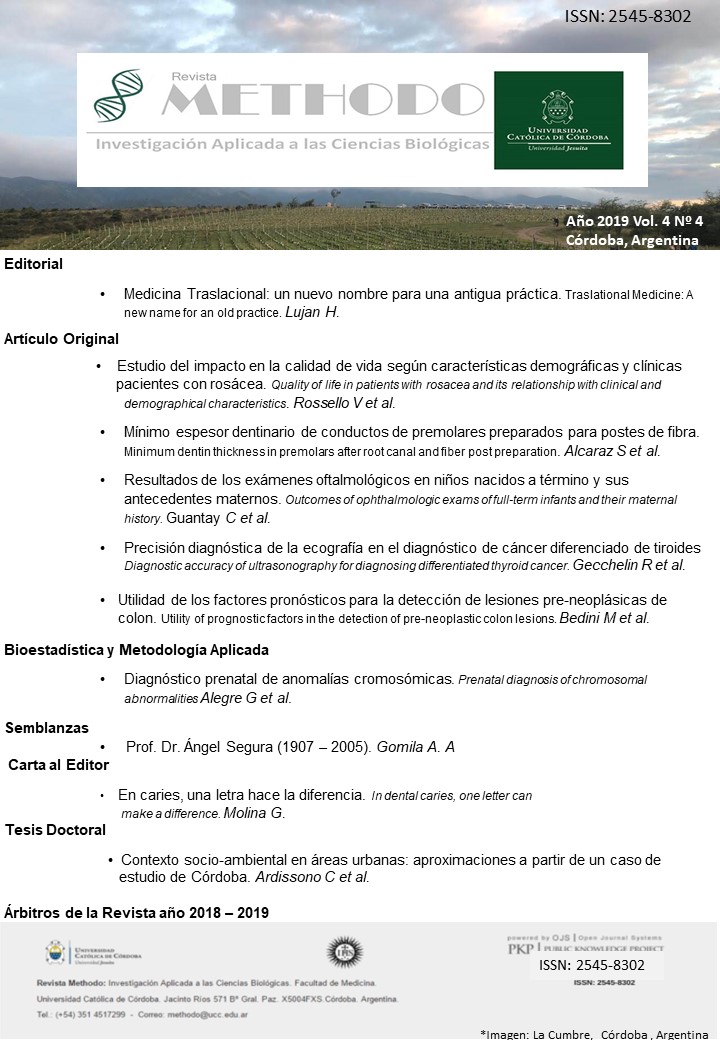Minimum dentin thickness in premolars after root canal and fiber post preparation
Keywords:
premolar, dentin, Cone-Beam Computed Tomography, PostAbstract
Abstract
INTRODUCTION: Endodontically treated teeth lose dental structure, as a result of caries, endodontic
access and post space preparation. This space is prepared by conforming the root canal which has irregular
and variable shapes, creating a space which shape corresponds with the posts.Post space should not exceed
one third of the root diameter and the residual dentin thickness should not be less than one millimiter
GENERAL OBJECTIVE: To evaluate in vitro the residual dentin thickness of premolar root canals after
endodontic instrumentation and post space preparation.
SPECIFIC OBJECTIVES: 1. To measure dentin thickness from the canal to the external surface of the root.
2. To recognize the area with mínimum dentin thickness in the post space. 3.To compare the location of the
area with minimum dentin thickness between theeth. 4.To determine the site of the tooth where the
minimum dentin thickness is located.
MATERIAL AND METHODS: Twenty extacted premolars with one canal were selected. Buccal and
proximal radiographs were taken and access cavities were prepeared. A pre-carved was done in the crown,
and the canals were instrumented with the Reciproc Blue system (VDW). Root canals were obturated with
gutapercha cones and AD SEAL sealer, using lateral condensation technique. Post space preparation was
performed No 1 Gates-Glidden drills, No 1 and No 2 Peesso drills and No 2 specific RTD drills, leaving
five millimeters of gutapecha obturation in the apical level. A Cone- Beam Computed Tomography (CBCT)
was taken and cross-sections measurements were calculated from the canal to the external surface of the
root. Residual dentin thickness was registered at three levels: obturation with gutapecha, the carved
shoulder and equidistant point between previous both points. Obtained data was registered for statistical
analysis by Student Newman Keuls test.
RESULTS: Residual dentin thickness was lower than 1mm in 5 teeth. The difference between mesial/distal
dentin thickness and buccal/lingual dentine thicknes was statistically significant. Minimum dentin thickness
were observed at mesial and distal sides, at apical level, followed by medium level.
CONCLUSION: Root canal and fiber post preparation in premolars remove dentin structure and the
minimum residual thickness was observed at mesial and distal sides of the root.




















